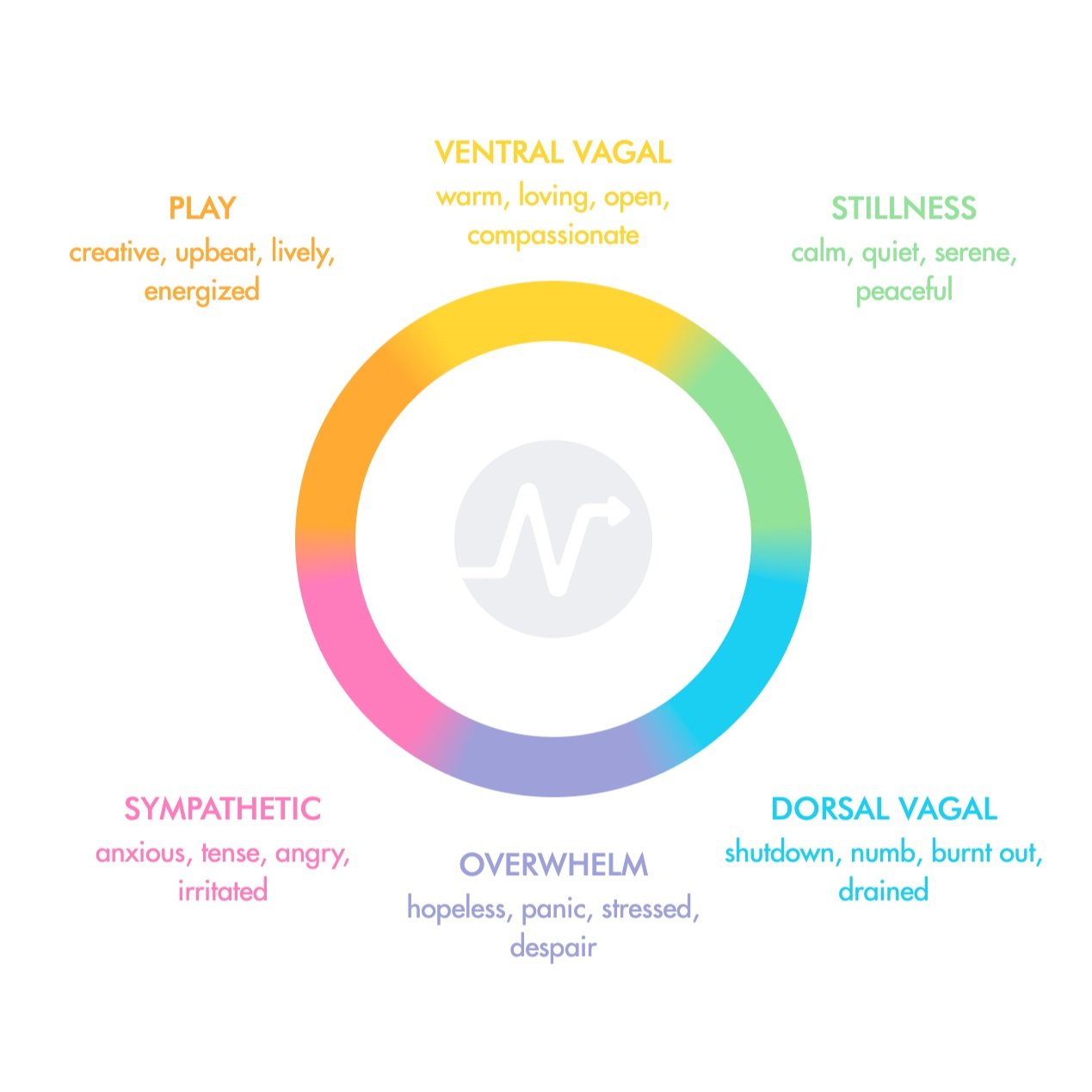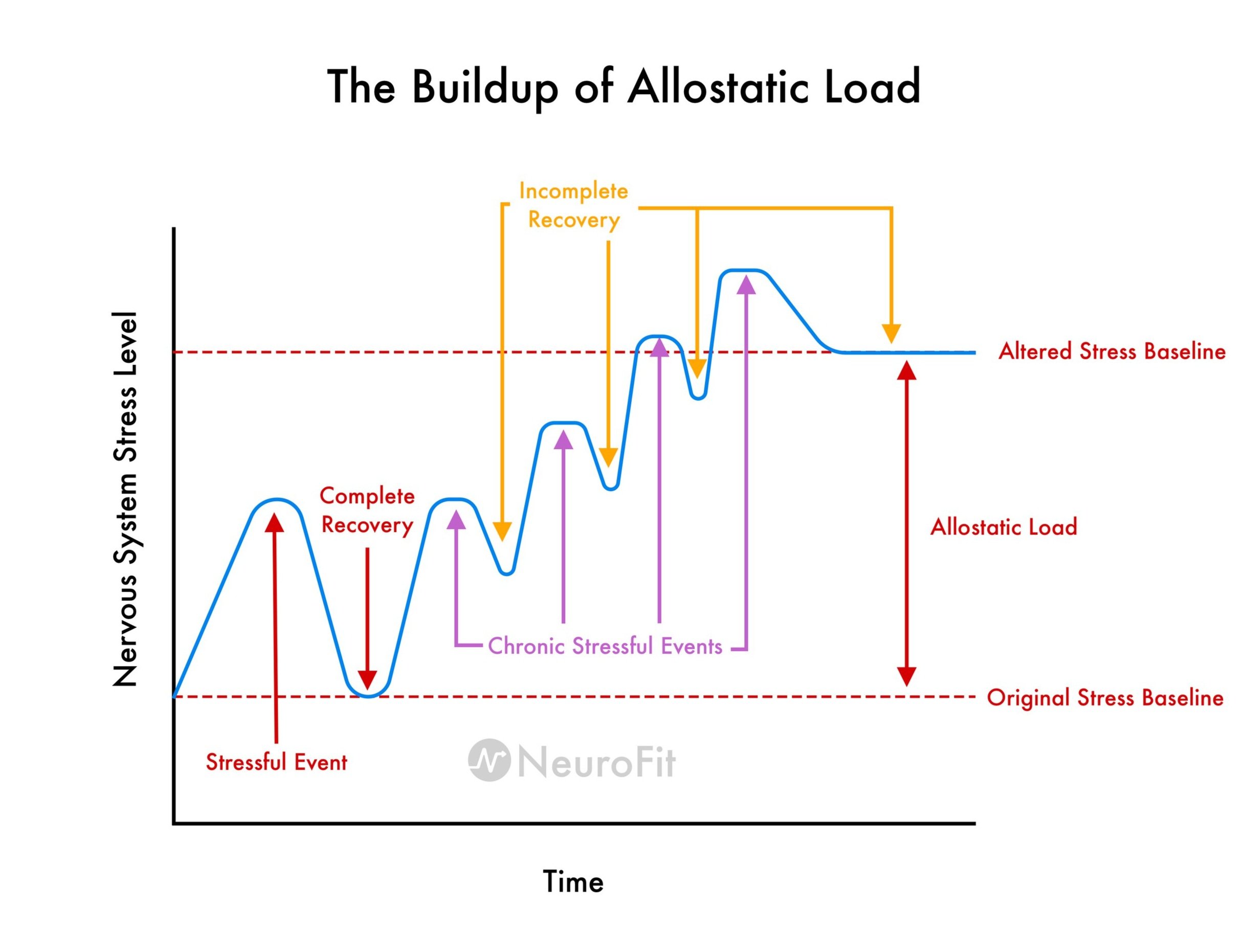A Beginner's Guide to Nervous System Regulation
Credit: Getty Images
If you are brand new to nervous system regulation, here’s everything you need to know.
What is Nervous System Regulation?
Nervous System Regulation is what allows us to shift flexibly between different nervous system states in response to internal and external stressors. A balanced nervous system can “spring back” easily in response to stress just like a rubber band. A dysregulated nervous system often gets “stuck” in a state like fight or flight or shutdown.
Why does this matter?
To highlight the importance of nervous system regulation, we’ll refer to Dr. Stephen Porges’ Polyvagal Theory which proposes that, our nervous system potentiates and limits our range of behavior, and significantly influences the way we experience the world around us. Let that sink in for a moment: our nervous system significantly influences the way we experience the world around us. The implications of this impact all areas of our life, whether we are consciously aware of it or not.
This is why, at NEUROFIT, we are deeply passionate about helping people develop what we have coined “Nervous System Fitness,” which is a measure of:
The overall flexibility, balance and resilience of the nervous system; and
The ability of the nervous system to adapt to changes in the environment, and to respond to demands placed upon it.
Without a strong nervous system baseline, we are more susceptible to:
Chronic stress and burnout
Anxiety
Buildup of allostatic load in the nervous system;
Health issues; and
Emotional dysregulation.
On the plus side, the benefits of a regulated nervous system are numerous and include:
Improved mood and emotional balance;
Increased creativity;
Hormonal balance;
Improved digestive function;
Reduced stress, anxiety and overwhelm;
Better sleep and physical recovery; and
Increased overall resilience.
Identifying Your Nervous System State
At NEUROFIT, we help our app members and clients optimize their nervous system by first identifying which of the 6 different states they are currently in. Here, we will give a brief outline of each primary and “mixed” state along with a helpful diagram for your reference.
Credit: NEUROFIT
Ventral Vagal
The ventral vagal circuit is responsible for the body's "rest and digest" response. This circuit is activated when the body is safe and relaxed. When the ventral vagal circuit is activated, the heart rate slows, blood pressure decreases, and the digestive system is able to function properly. The ventral vagal circuit also supports social engagement behaviors.
Example: Imagine you’re 30 minutes into catching up with a longtime friend. There’s a great sense of ease, openness and happiness that seems to be effortlessly present. You feel relaxed and joyful - you’re in Ventral Vagal.
Sympathetic Nervous System (Fight or Flight)
The sympathetic nervous system is responsible for the body's "fight or flight" response and mobilizes defensive behaviors. This circuit is activated when the body is under stress or in danger. When the sympathetic nervous system is activated, the heart rate increases, blood pressure rises, and the body's muscles are primed for action. Here we commonly experience anxiety, overthinking/looping thoughts, anger, and tension.
Dorsal Vagal (Freeze)
The dorsal vagal circuit is responsible for the body's "freeze" response. This circuit is activated when the body is overwhelmed by stress or danger. When the dorsal vagal circuit is activated, the heart rate and blood pressure drop dramatically, and the body's muscles tense up in order to protect itself.
The Play State
The Play State is a combination of the Ventral Vagal State and the Sympathetic State. By coupling Ventral Vagal safety with the high energy of the Sympathetic State, the nervous system learns to be activated without feeling threatened or responding with aggression. Instead of dropping straight from rest-and-digest into a stress response, play teaches the nervous system to remain balanced, open, and creative, even when we may perceive some stress.
The Stillness State
The Stillness State combines Ventral Vagal’s openness with Dorsal Vagal’s immobilization. Similar to how Play builds resistance to the Sympathetic State, Stillness builds nervous system resistance to Dorsal Vagal – the body's natural shutdown/freeze response to excessive stress. Stillness helps us learn to remain calm under stress, and increasing our familiarity with it also makes it easier to fall asleep at night as many of the same neural pathways are used.
The Overwhelm State
The Overwhelm State is a combination of both the Dorsal Vagal State and the Sympathetic activation energy. When in this state, we commonly experience feelings like hopelessness, panic, and despair.
What is Nervous System Dysregulation?
Nervous system dysregulation is a condition in which the body's stress response becomes constantly activated, even in the absence of a stressful situation and long after a stressful or perceived threat has passed.
When stress becomes more prolonged, it builds up in the nervous system. As the nervous system holds onto more and more stress, it becomes less flexible, and more prone to moving into fight or flight or shutdown responses. This is due to excessive “Allostatic Load” - how far the nervous system has deviated from its normal resting baseline due to stored stress. Allostatic load, or the cumulative wear and tear on the body from stress, can take a major toll on productivity and performance if not managed properly (see diagram).
Credit: NEUROFIT
How to Find Balance
Understanding the different nervous system states and most importantly, noticing when you are in a dysregulated state, is the first step to creating a more resilient and flexible nervous system. Likewise, incorporating daily habits and somatic balance exercises will drastically improve your overall health and well-being.
Get Started with NEUROFIT
Within the NEUROFIT app, we have created a streamlined process for tracking your daily habits (i.e. sleep-wake cycle, diet, social and online content intake) along with a full catalog of BALANCE exercises that are recommended based on your current nervous system state (and resourced from real-time user data). The good news? All of this takes as little as 5 minutes a day!
Start your 6-week nervous system reset with the NEUROFIT App.



